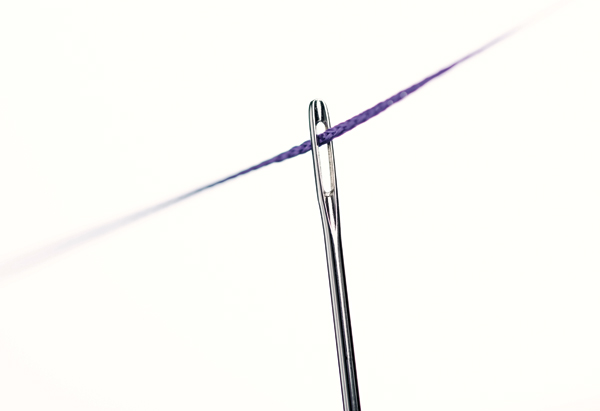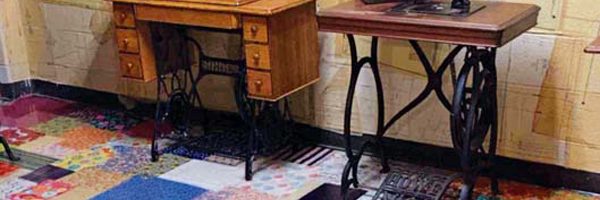
Know Your Product: Hand Sewing Needles
There are a large variety of needle types, and quilters tend to use mostly straws, milliners, sharps and betweens. It is widely agreed that the best needles for hand sewing and quilting are between needles and sharps are best for appliqué. The larger the size number, the smaller the needle. As a beginner it is recommended to purchase a packet of mixed sizes and practise quilting with the different sized needles. Generally it is a good idea to start with a #9 and work your way through to a #12. The smaller the needle the finer your quilting stitches will be.
A needle consists of three elements: the eye, the shaft and the point. Eye shapes and sizes differ to suit the type of thread you’re sewing with as well as to allow the needle to pass through the fabric with proficiency – that is to glide through the fabric with the least impact on the threads of the fabric, or the thread being pulled by it. The long portion of a needle is called the shank. The length and thickness of the shank decreases as the size number increases; for example, a size 12 needle is finer and shorter than a size 10 needle. Needles are coated with a smooth metal that encases their sturdy core construction so that they glide easily through the fabric and to help prevent corrosion.
Make the Domestic Bliss Apron by Mollie Johanson
Types of Needles
Betweens
These are short, sturdy needles that are designed for hand quilting. Their short length and small eye allow them to easily travel through the three layers of a quilt sandwich. Between needles are easy to manage while creating tiny, accurate stitches.
Betweens range in size from #3 to #12, with #12 being the smallest needle. Beginners should start with a #8 or #9 and progress to a finer shorter needle as they become more skilled.
Create your own Milk and Cookies drawstring bag!
Sharps
These are sometimes also called appliqué needles; they are fine and sharp and their shorter shank makes them more controllable. The eye is punched into the shank, so it will glide smoothly through the layers of fabric. They are very similar to between needles for hand quilting, only a little longer.
Size 10 sharps are a popular choice for English paper piecing, hand piecing, appliqué and hand stitching the binding in place.
Milliners
Milliners (or straw) needles are very similar to sharps, but longer. They are suitable for appliqué, basting and hand stitching the binding in place.
These needles are great if you prefer a longer needle – like sharps they have a small eye – but the fine shank is longer. Straw or milliners needles can also be used for English paper piecing.
Embroidery
The shank of an embroidery needle is thicker and stronger than straws or sharps and won’t bend under the pressure of pulling the thicker thread through the quilt layers. The eye is tapered to accommodate threads such as Perle or multiple strands of embroidery floss.



